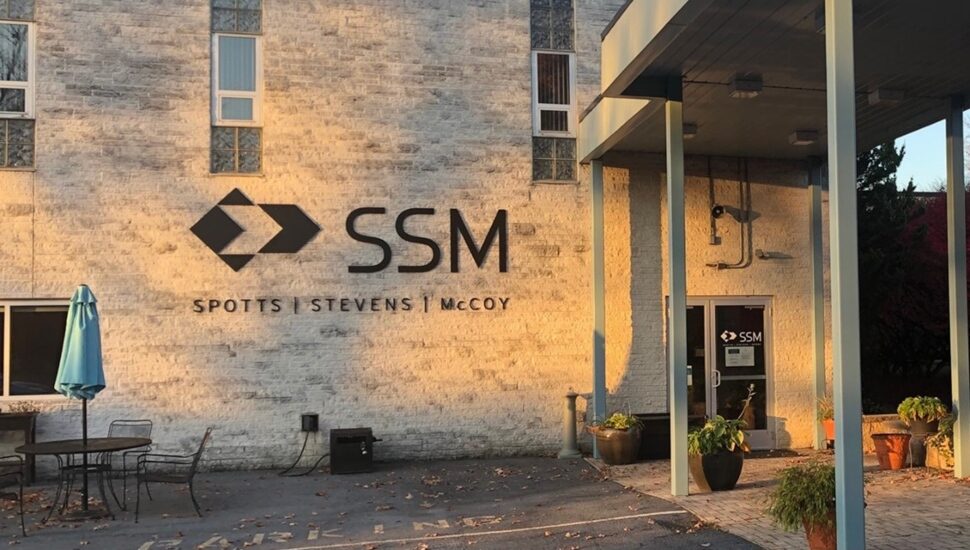Spotts, Stevens, and McCoy Celebrates 15 Years as Partner in EPA’s Source Water Protection Program

Spotts, Stevens, and McCoy — a regional engineering, environmental, and surveying firm with an office in West Chester — is celebrating its 15th year as a technical partner in the Source Water Protection Technical Assistance Program (SWPTAP).
SWPTAP is a voluntary technical assistance program funded by the U.S. Environmental Protection Agency (EPA) and Pennsylvania Department of Environmental Protection (PADEP). SWPTAP offers public drinking water suppliers the no-cost opportunity to develop a source water protection plan with the goal of protecting their water sources utilized for drinking water.
Over the last 15 years, the program has been incredibly successful, with more than 500 public water suppliers requesting participation in the program.
Developing a Source Water Protection Plan
- Identifying the protection area. The first step in creating a source water protection plan is delineating protection areas for each drinking water source. Sources may consist of groundwater wells, springs, surface water intakes, or a combination of these. The SSM team uses a variety of inputs in geographic information system (GIS) database and hydrogeologic modeling software to determine how and from where water flows to a source — whether on the surface or through the ground. The result of that modeling determines the boundaries of the protection area, which serves as the basis for the protection plan.
- Analyzing potential threats. Once the protection areas are determined, the team analyzes potential sources of contamination (PSOCs) within the area. Identifying these potential threats is key to creating a viable protection plan for the protection area. This phase of the plan provides the water system with an inventory and maps of the PSOCs.
- Developing management strategies. The SSM team then works with the system and steering committee to develop a list of attainable management strategies that will help the system protect their sources from these PSOCs. As a final phase, SSM develops a report describing the water system and technical aspects of the project.
Implementation
The water system can choose to implement its source water protection plan in whichever way makes sense for the size, resources, and goals of the system. Implementation can range in complexity and may involve simple, good housekeeping practices such as house training, or developing a spill cleanup program. Or, the implementation may involve public education and outreach with cleanups or tree planting. Implementation may also be as involved as working with local and county officials to implement ordinances or other regulatory protections for the water system. SSM is honored to assist several SWPTAP graduates, now its valued clients, in their implementation efforts.
Moving Forward
Over the years, SSM has seen SWPTAP evolve with the introduction of new technologies, data, and program goals. Eight years ago, the small system program was added as a sub-set of SWPTAP. This program aims to provide much smaller water supplies (such as mobile home parks, assisted living facilities, or small municipalities) the same benefits as SWPTAP, but on a smaller, more appropriate scale.
While any size public water supplier may always apply to the program, in recent years, SSM has seen a shift from mostly larger, urban, and suburban water suppliers to more rural water suppliers participating in the program. This proves that source water protection truly is for everyone.
Of the 500 total systems that have participated in SWPTAP over the years, more than 200 of those have entered through the small system program, almost all of those systems serving a population of less than 500 customers, with many serving less than 100 customers.
As the program continues to evolve, SSM continues to be proud of being a part of it. It has had the opportunity to assist clients in protecting drinking water for millions of Pennsylvanians over the last 15 years. The future of source water protection continues to grow, and SSM looks forward to being right there with it.
Learn more about Spotts, Stevens, and McCoy.
Connect With Your Community
Subscribe to stay informed!
"*" indicates required fields





![95000-1023_ACJ_BannerAd[1]](https://vista.today/wp-content/uploads/2023/03/95000-1023_ACJ_BannerAd1.jpg)











































